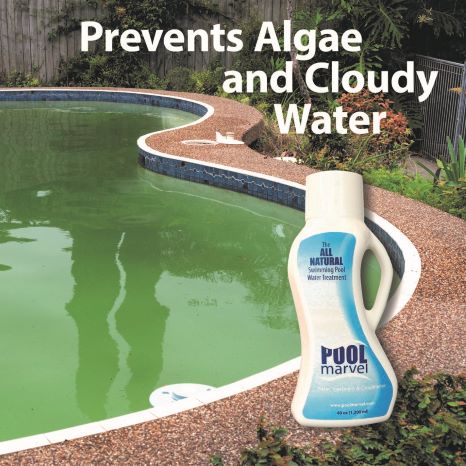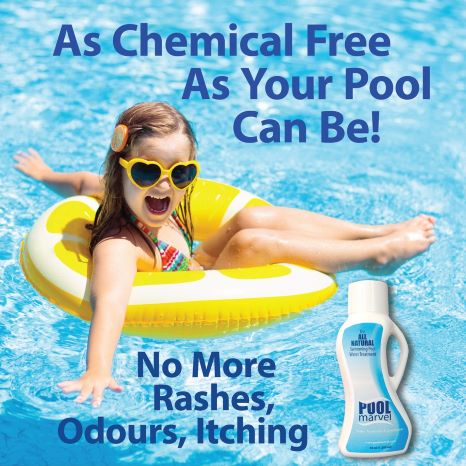
Cloudy Pool Water: Causes, Effects, Treatments, And Prevention
Cloudy pool water has a murky, unsightly appearance due to large numbers of microscopic particles reflecting the sunlight. It presents as flat-looking water with clarity but no sparkle in the early stages. In its most severe form, cloudy pool water is completely opaque and obscures the pool floor.
Since cloudy pools can harbour germs such as norovirus and E. coli, restoring pool clarity should always be a priority. How to fix cloudy pool water will depend on the cause and the severity of the cloudy water.
What Causes Cloudy Pool Water?
A cloudy swimming pool is usually caused by one of the following four reasons:
Filtration Issues
Your pool’s filter is your first line of defence against particulate matter, but only when it’s in optimal condition. When a filter is old, clogged, or defective, it’s no longer trapping fine particles that lead to cloudy pool water.
Circulation Issues
To process the water through your filter, you need to operate your pool pump for the correct amount of time. Otherwise, the pool water becomes stagnant – and a breeding ground for bacteria to form.
Besides the ability to properly cycle your pool water, your pump needs to be the appropriate size for your pool and filter. The pump’s gallons per minute (GPM) rating should always be lower than the filter’s maximum GPM rating; otherwise, the filter will be undersized and will not filter the pool water efficiently.
Like your filter, your pool pump can deteriorate as it ages, and parts may need to be replaced to maintain optimal performance.
Imbalanced Pool Chemicals
Often, cloudy swimming pool water indicates an insufficient level of free chlorine. When there’s too much combined chlorine (chloramines), there’s no longer enough free chlorine to sanitize your water. This provides an ideal environment for algae and other bacteria to grow, and eventually, the pool water will turn green and cloudy.
Besides the chlorine level, the pH level may be to blame. When the pH is higher than 7.8, chlorine becomes less effective at killing bacteria, creating a favourable environment for algae growth and poor water quality.
High total alkalinity and/or high calcium hardness are also common causes of cloudy pool water. Too much calcium hardness generates excess calcium, which is insoluble. This can accumulate in your pool’s plumbing and equipment, resulting in poor filtration and cloudy water.
An improper alkalinity level produces rapid pH changes, which can make chlorine ineffective. This can result in algae growth and cloudy water
Environmental Debris
Natural debris, including leaves, twigs, insects, bird droppings, and pollen, consume large amounts of sanitizer. These environmental contaminants are prevalent during the spring when they block up your pool’s filtration system and disturb your pool’s pH balance.
Stormwater run-off introduces minerals such as nitrates, phosphates, silicates, and sulphates into your pool water, making it cloudy. Excessive rain also dilutes chlorine and affects pH.
Like natural debris, algae also consume sanitizer quickly. After completing a shock treatment, dead algae can cause cloudy water. The filtration system will usually clear this up within 24 hours.
Swimmers may be another cause of your cloudy pool water problem. Particles in bathers’ sunscreens, oils, makeup, sweat, and bodily fluids reflect the light and create a cloudy appearance in pool water.
How To Fix A Cloudy Pool
When determining the best approach to clear a cloudy pool, you’ll first need to troubleshoot the cause. Complete the following steps:
1. Test Your Water
Measure how much free or combined chlorine is in your pool water. To get the amount of combined chlorine, deduct the value of free chlorine from your total chlorine value.
Whether you have a cloudy saltwater pool or non-saltwater pool, a free chlorine level below three ppm or combined chlorine above 0.5 ppm indicates a free chlorine level that’s too low. To clear pool water with low free chlorine levels and high combined chlorine levels, you’ll need to shock your pool with a high dose of chlorine. The shock destroys the chloramines and kills algae. If algae are a cause of your cloudy pool water, you may need to shock the pool up to three times to destroy it completely.
Sometimes, your pool becomes cloudy after a shock treatment. This is usually only temporary and will resolve within 24 hours. If the problem persists, it could be because your pool’s pH, calcium hardness, or alkalinity levels are too high.
If your pool water’s chlorine residual is okay or if shocking the water doesn’t help clear the cloudiness, test your pool’s pH and total alkalinity levels. A pH level above 7.8 and/or alkalinity above 180 can create cloudy pool water – especially if you have high calcium levels or other dissolved solids.
If there’s a high calcium level (above 400ppm), both persistent cloudiness and calcium scaling usually occur. Test and balance your pH, total alkalinity, and calcium hardness levels.
2. Inspect Your Filtration System
Inspect your filtration system if your pool is cloudy. A dirty filter, insufficient running time, improper pump size, or lack of maintenance can result in poor filtration.
Inadequate Pump
When a pump isn’t strong enough to correctly circulate and filter pool water, it can result in a green, cloudy pool. A pump should be powerful enough to turn over your pool water at least once every 8-12 hours, plus be appropriately suited to your filter. A pump that’s too powerful for your filter can prevent water from being thoroughly cleansed and create physical damage to your filtration system.
Your pump also needs to be in good condition. As your pool pump ages, parts may start failing and require replacing. Identify and remove blockages and complete timely part replacements.
Running Time
Pool water must circulate through your filter system entirely every day. A pump should run for a minimum of eight hours (preferably during daytime hours) to properly circulate all the water in your pool. If your pump is turned off too early, foggy pool water can result.
Maintenance
Pool filters that have clogs or build-up will cause cloudy water. If it’s been a while since you last cleaned your filter, it’s time to complete a detailed cleaning.
For cartridge filters, remove the cartridge and wash it carefully. Soak your filter for at least 12 hours using a filter cleaning solution, then rinse it well. If you have a sand filter, complete a backwash. For D. E. filters, complete a backwash and clean the manifold and grids.
When filter media is worn out or damaged, it will no longer be able to trap cloudy water-causing contaminants. Change filter sand every five years and cartridge filters every year. For D.E. filters, replace the filter grids every 4-5 years.
3. Remove Contaminants
Remove any leaves, twigs, insects, and other contaminants that enter your pool and block your filter system. They consume chlorine and make the filtration system work harder, leading to cloudy water.
Early-stage algae growth commonly causes cloudy pool water after opening a pool for the season. Skim, brush, and vacuum your pool to eliminate any algae. Bypass the filter when vacuuming by selecting the waste setting. Shock your pool, then rebalance your pool water.
Using A Swimming Pool Clarifier To Clear Cloudy Pool Water
Pool clarifiers provide the easiest method for clearing up cloudy pool water. Clarifiers are coagulants that clump together the microscopic particles causing your cloudy pool so that the filtration system can then remove them.
Pool water clarifiers require a few days to work, depending on the strength of your filtration system.
To Use:
Before using a clarifier, remove any large debris with a heavy-duty skimmer, then manually brush and vacuum your pool. Test and balance your water.
Shock the pool to make sure algae and other contaminants have been eliminated. Run your filter and let the shock work for a minimum of eight hours. Retest your water.
Keep your filter continuously running for at least 24 hours. In an inground pool, increase pool circulation by positioning your return jets at a 45° angle and using your bottom drains. In above-ground pools with no main drain, attach your manual vacuum cleaner and turn it upside down at the bottom of the pool.
Once the shock has dissipated, add the appropriate amount of clarifier as per the manufacturer’s directions.
Check your filter after 24 hours.
Your water should be perfectly clear after 2-3 days.
Using Pool Flocculant (FLOC) To Clear Cloudy Pool Water Fast
Use a flocculant chemical to clear a cloudy pool quickly or treat particularly bad cloudy water cases. Although this method can clear a cloudy pool as quickly as overnight, it takes much more work and a lot of manual vacuuming.
To Use:
Test and balance your water. Add pool flocculant, following the manufacturer’s instructions to calculate the proper dosage for your size pool.
Circulate your water for two hours, selecting the recirculate setting if you have a multiport valve. Turn off your filter system for 8-12 hours to allow the particles to settle at the bottom of the pool. Using the waste option on the multiport valve, vacuum the cloudy water out of your pool rather than through your filtration system. For pools without a multiport valve, open the drain port on the filter and allow the water to drain out while vacuuming.
Vacuum slowly to reduce the amount of cloudiness that stirs up. Allow the particles to resettle, then repeat the vacuuming process as many times as necessary. Using a garden hose, refill your pool with water after vacuuming.
Rebalance your water chemistry and start running your filter system normally. A pool flocculant can clear a cloudy pool in less than 24 hours when used correctly.
Can You Swim In Cloudy Pool Water?
The contaminants and pathogens in cloudy water can make it unsafe for swimming. Contaminants that are common in your pool water include urine, feces, blood, sweat, dirt, and other particles. A cloudy pool may also contain microscopic pathogens such as Cryptosporidium, Giardia, Shigella, norovirus, and E. coli. The bacteria can be harmful and cause urinary tract infections, gastrointestinal problems, and eye and skin irritation.
In addition, cloudy pools can present visibility challenges that increase the risk of drowning. Swimmers can’t see the bottom of the pool, and struggling swimmers are harder to identify by those who are supervising.

How To Prevent Cloudy Pool Water
Completing regular maintenance is the best way to avoid having to clear cloudy pool water.
Inspect and clean your pool filtration and circulation systems regularly. Test and balance your water weekly and after extreme weather. Excessive heat can cause chemicals to lose their effectiveness and cause water to evaporate. For pools in direct sunlight, using a chlorine stabilizer can help.
Pools can also become cloudy after rainfall since rainwater and storm debris can disturb a pool’s pH balance and chlorine levels. Try to cover your pool every time it rains or when it’s not in use. Frequently trim trees and shrubs surrounding your pool area to reduce the amount of pollen, leaves, and seeds that enter your pool water.
Empty your skimmer basket of debris often, especially in the spring and after a storm. Run your filtration system for at least eight hours per day, and backwash or replace your pool filter regularly. Skim, brush, and vacuum the pool whenever necessary.
Use quality pumps, filters, and chemicals appropriate for your pool size and type. Discount brands sometimes have weaker quantities of chlorine, requiring a higher dose to achieve desired results.


